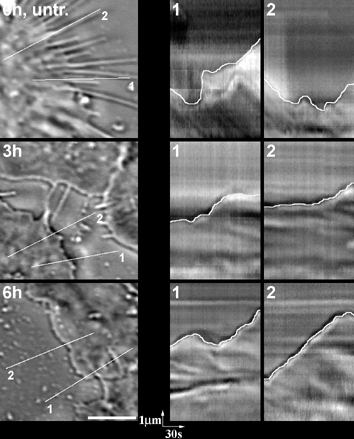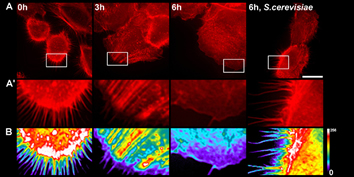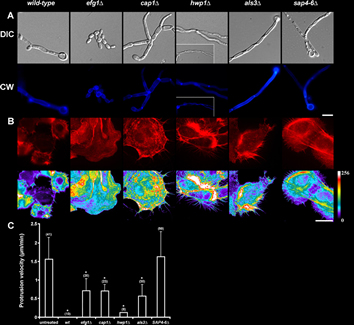Migration of Human Oral Keratinocytes during coculture with pathogenic Candida albicans
Pathogenic microbes that infect tissues of higher organisms have evolved numerous strategies to exploit their host’s cellular processes to invade host tissues. A major cellular target of microbial pathogens includes the signal transduction pathways that regulate the actin cytoskeleton and intracellular vesicle transport. Secreted aspartyl proteases (Saps) are important factors that contribute to the virulence of C. albicans during the infection process. To understand the dynamic changes of the cytoskeleton, cell–cell and cell–substrate interactions that occur when human oral keratinocytes (OKF6/TERT-2; Dickson et al., 2000) are exposed to Candida albicans, we monitor F-actin dynamics and migration of keratinocytes by long-term time lapse imaging followed by motion analysis.




